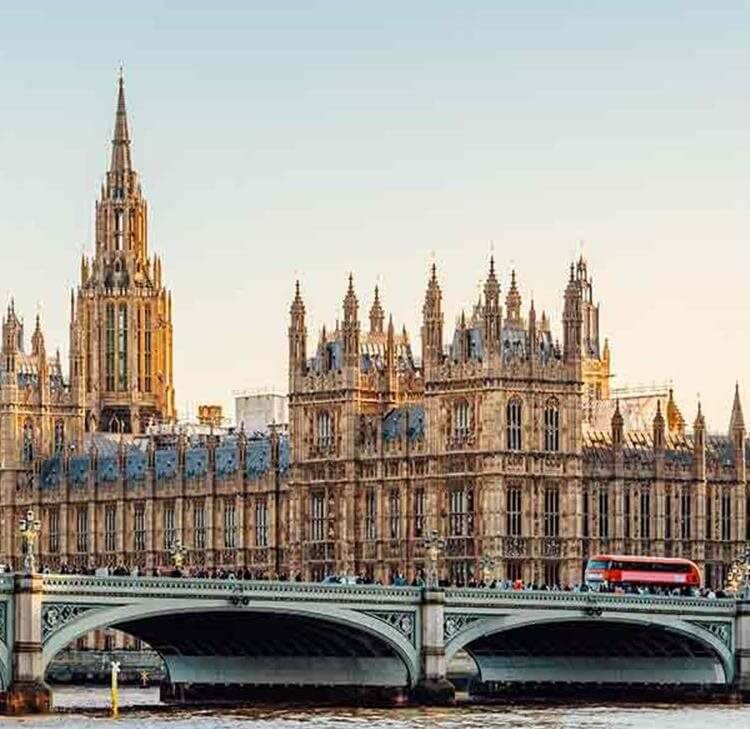In June 2024, property developer Mr Aubrey Weis appealed to the Competition Appeal Tribunal (CAT), challenging approximately £120m in loans (the Loans) made by the Greater Manchester Combined Authority (GMCA) to support a high-quality housing project within its area.
Mr Weis argued that the Loans breached the Subsidy Control Act 2022 (the Act) because they were granted on non-commercial, "non-market terms", effectively constituting a subsidy that distorted competition in the local property market.
In this article, we cover key points from the respondent's argument and its implications for public sector lending in regeneration projects.
The respondent's argument
- The decision to make the Loans did not amount to an unlawful subsidy at the time of the Appellant’s application in June 2024, as the decision was still in principle and not yet formally executed. On that basis, it could not amount to a subsidy decision capable of being challenged under section 70(1) of the Act; and
- That the Loans did not amount to financial assistance conferring an economic advantage for the purposes of the Act even once they had been entered into, because they had been made on commercial terms that were in line with the market.
The argument made by the respondent in relation to the second point was based on the Commercial Market Operator (CMO) principle – this is the principle that where a public authority enters into a transaction on terms which would be acceptable to a private sector comparator, there will be no economic advantage to the recipient.
Many regeneration projects will involve a public authority making loans in order to bridge a viability gap, or to support a special purpose vehicle established for the purposes of the project.
Generally, loans are sought from public authority funders because the recipient is unable to obtain funding from private sector sources, or unable to obtain that funding at an acceptable rate. This is where the CMO principle comes in – if the public authority is satisfied that it is making a loan on the same terms as a private sector lender would consider appropriate, then it can make the loan without granting a subsidy.
However, there is always a tension here, particularly in the case of loans because, if a private sector lender would provide the support on the same terms, why should the public sector need to step in at all?
Sometimes, this is about the additional expertise or knowledge the public sector may have in the specific market, which allows them to take a view that a private sector operator stepping into their shoes might take, but which the actual private sector operators don’t have.
In other cases, it may be about the relationship between the parties. As a result of that tension, it is important that public authorities adopting a CMO approach carefully consider and record their justification for using the approach and stay live to the changing caselaw in this area.
Key takeaways for regeneration projects
1. GGE Regulations are not determinative of compliance
Firstly, applying the rates set out in the Subsidy Control (Gross Cash Amount and Gross Cash Equivalent) Regulations 2022 (the GGE Regulations) is not an automatic route to compliance. The GGE Regulations are used to determine a proxy for commercial loan rates – however, the Competition Appeal Tribunal’s (the CAT) judgment indicated that whilst the GGE Regulations are a useful indicator in setting rates, they were not determinative of whether the Loans conferred an economic advantage.
This means that the GGE Regulations alone are not enough to base a CMO principle argument on, and public authorities will need to take into account other factors in their decision as to the appropriate loan rate.
2. External expert opinions are not always required
Secondly, it is not always necessary to have an external expert opinion on whether a loan rate and terms would be acceptable to a private sector comparator. In Weis, the CAT considered that the Respondent’s funding team possessed the expertise to have been aware of commercially available rates upon which the indicative rates were based, and that the proposal for Loans had been overseen by individuals with considerable lending experience within the Gateway Panel and Credit Committee.
However, a cautious approach should be taken. Whilst very large public authorities certainly may have teams with sufficient depth and breadth of experience and market knowledge to make these decisions, smaller, and less well funded authorities may not. In those circumstances, careful consideration should be taken in appointing an expert commercial advisor to support the authority’s decision making.
3. Timing of subsidy decisions may be earlier than expected
Finally, public authorities should be aware that the decision in Weis also raises questions about when the decision to make a subsidy is made.
The Statutory Guidance suggests that, generally, the decision to make a subsidy will coincide with entering into the documents which give the recipients an enforceable right to the subsidy, although it does acknowledge that an earlier date may be possible. The CAT in Weis took the view that a subsidy decision had been made at the point that the Respondent authority had decided to go ahead with the loans, subject to due diligence.
Whilst the point at which a decision is made will depend on the facts of each case and the governance processes of the relevant authority, it is important to be aware that the decision to give a subsidy may be made at an earlier point than indicated by the guidance. This impacts on both timescales for making an entry on the subsidy database, but also the point at which a decision may be challenged.
Contact

Angelica Hymers
Principal Associate
angelica.hymers@brownejacobson.com
+44 (0)115 976 6092
Discover more
Related expertise
You may be interested in
Legal Update
What lessons does Weis v GMCA have for public authorities delivering regeneration projects?
Published Article
Innovative housing strategies for councils after ‘asylum hotels’ injunction
Legal Update - Public matters newsletter
Public matters: August 2025
Legal Update
Changes to the subsidy control statutory guidance August 2025: What public authorities need to know
Legal Update
Greater Manchester Combined Authority v developer: Key lessons on subsidy control for local authorities
Legal Update
Subsidy control cases coming into land
Legal Update
Government publishes response to consultation on Subsidy Control Regime
Legal Update
Refining the UK subsidy control regime consultation
Legal Update
The housing benefit subsidy deficit: Strategies for funding temporary accommodation
Published Article
The legal and planning hurdles that must be overcome to get Great British Energy generating
Legal Update
Update on local authority owned companies: Part 1 subsidy control
Legal Update
Does the subsidy control regime already need changing for the government to kickstart economic growth?
Legal Update
The transparency regime under the Subsidy Control Act - how it could be improved
Legal Update
Subsidy control guidance update - welcome guidance on 'small subsidies' introduced
Legal Update
Subsidy control: Guide to streamlined routes for universities
Legal Update
Subsidy control - lessons learned in the first year
Legal Update
Review of a subsidy control decision: The Durham Company Ltd v Durham County Council, 27 July 2023
Press Release
Browne Jacobson advising the Welsh Government on the delivery of significant number of renewable energy projects
Legal Update
Subsidy control lessons to be learnt from Bulb
Legal Update - Public matters newsletter
Public matters - February 2023
Legal Update
Government introduces first Streamlined Subsidy Schemes under new regime
Legal Update - Public matters newsletter
Public matters - January 2023
On-Demand
The Subsidy Control Act 2022. Putting the new regime into practice
Legal Update
Government provides guidance on new Subsidy Control Database and the calculation of their value
Legal Update
The impact of the new Subsidy Control regime on public regeneration projects
Legal Update
Subsidy Control Act 2022: economic queries
In July, the long-awaited statutory guidance on the Subsidy Control Act 2022 (Act) was published in draft form (Draft Guidance). A consultation on the draft guidance has recently ended and the results have not yet been published – it may therefore change before the final version is published.
Legal Update
Economic activity for the purposes of the Subsidy Control Act 2022
When carrying out a mix of activities it can be less clear if it is 'economic'. We look at the impact on local authorities & charities.
Opinion
The UK’s first domestic subsidy control case
We waited more than a year for it, but the wait is over – we finally have a domestic case on the new subsidy control regime.
On-Demand
Subsidy control webinar - 30 March 2022
In this on-demand session, Alex Kynoch and Angelica Hymers explore the practicalities of complying with the new Subsidy Control Bill, and the impact of illustrative guidance and policy statements recently published by the Government.
Published Article
The Subsidy Control Bill – Illustrative Guidance and Regulations – legal certainty vs flexibility
It has been a turbulent couple of years for those involved in subsidy control, and 2022 will be equally challenging. The Subsidy Control Bill (Bill) will take effect in 2022.
Legal Update
Subsidy control regime: new Bill working its way through Parliament
2022 is the year in which the UK’s new post-Brexit subsidy control regime will take effect. The new Subsidy Control Bill will form the backbone of the UK’s new subsidy control regime. The new Bill will replace the EU’s state aid rules, which applied until the end of the Brexit transition period.
Legal Update
New Year, New Subsidy Control Regime Part 2: Schemes, enforcement and transparency under the Subsidy Control Bill
In the first part of this article, we discussed the application of the Subsidy Control Principles. In part 2, we look at how Streamlined Subsidy Schemes will be used to grant certain subsidies more quickly, and at the enforcement and transparency provisions of the Bill.
Legal Update
New Year, New Subsidy Control Regime Part 1: The principles, restrictions and exemptions under the Subsidy Control Bill
The repeal of the State aid rules and their replacement by the regime stemming from the UK-EU Trade and Co-operation Agreement (TCA) in 2021 meant that practitioners and public bodies had to acclimatise to a new, more flexible but less certain approach.
Press Release
Browne Jacobson’s government & infrastructure lawyers advise on first South West based green hydrogen production project
Browne Jacobson’s specialist government and infrastructure team have advised Canford Renewable Energy Ltd on the delivery of its Dorset Green H2 facility.
Published Article
Subsidy control after Brexit - a practitioner's perspective
Back in late 2020, we waited expectantly for news of what the rules on state aid were going to be when the Brexit transition period ended on 31 December.
Legal Update
Consultation on new UK subsidy control regime
It is vitally important that public bodies make use of this opportunity to have their views heard and to shape the future of the new subsidy control regime.
Opinion
Consultation launched on the future of subsidy control law
The Department for Business, Energy & Industrial Strategy has just launched its consultation on the future of subsidy control law (previously known as state aid) in the UK.
Legal Update
New year, new-ish state aid rules: the new subsidy control regime
Until a formal subsidy regime is put in place funding bodies must grapple with the complex and challenging exercise of legal obligations from the UK-EU TCA and numerous trade agreements to grant funding.
On-Demand
State aid and subsidy control - post Brexit
Opinion
New Year, new-ish state aid rules
From 1 January 2021 the state aid principles set out in the Trade and Co-Operation Agreement are incorporated into law by the EU (Future Relationship) Act 2020.


























